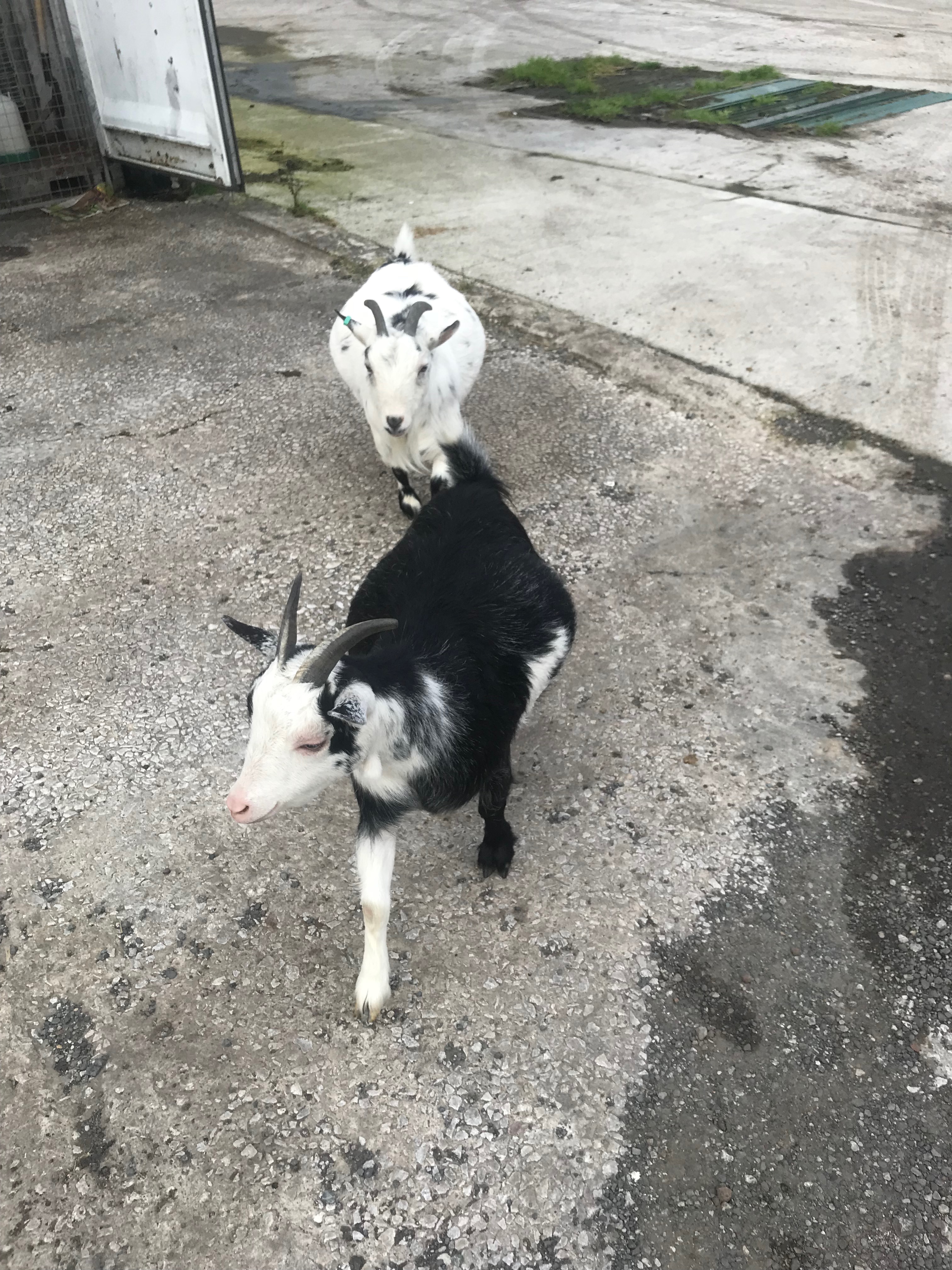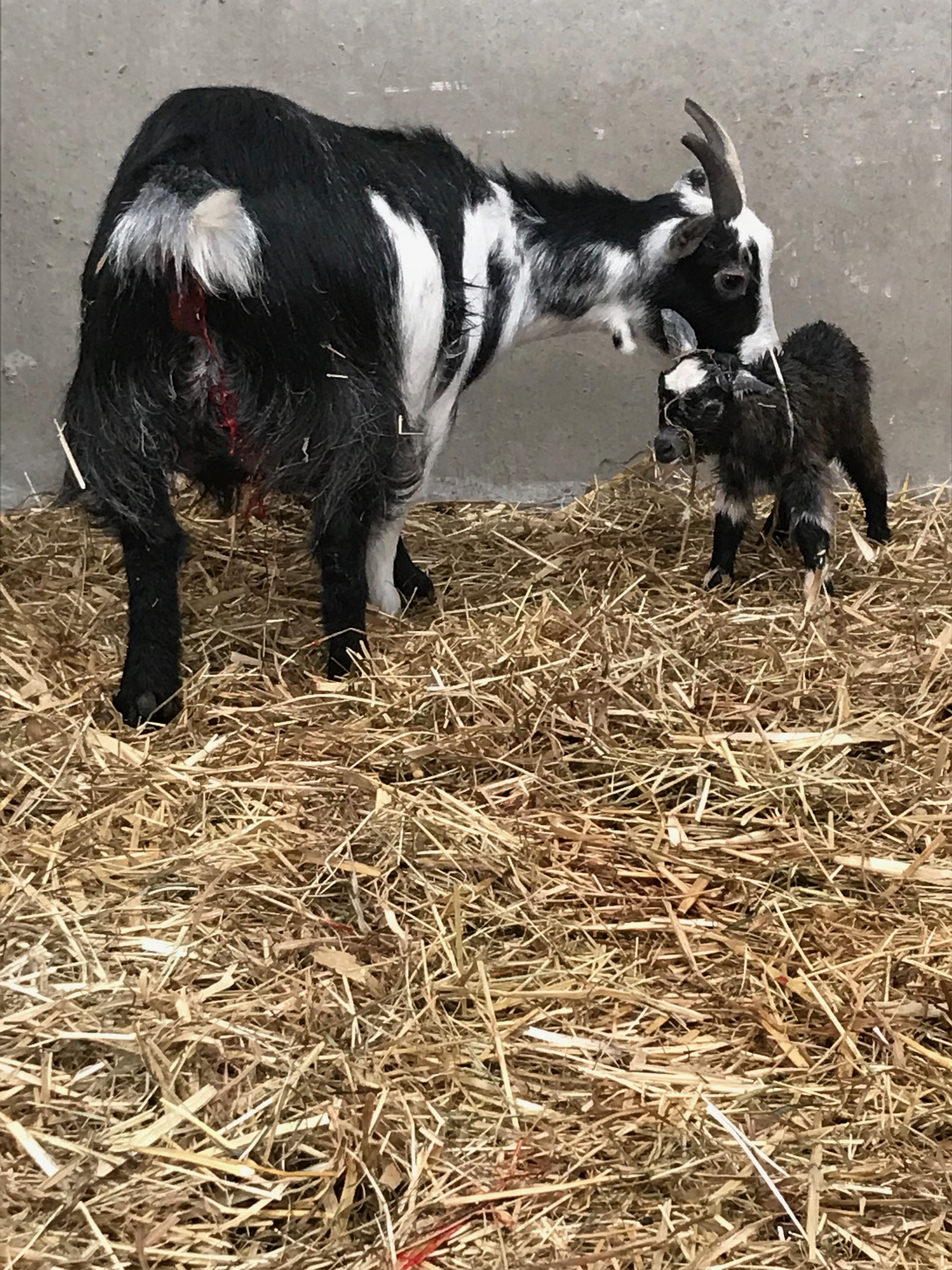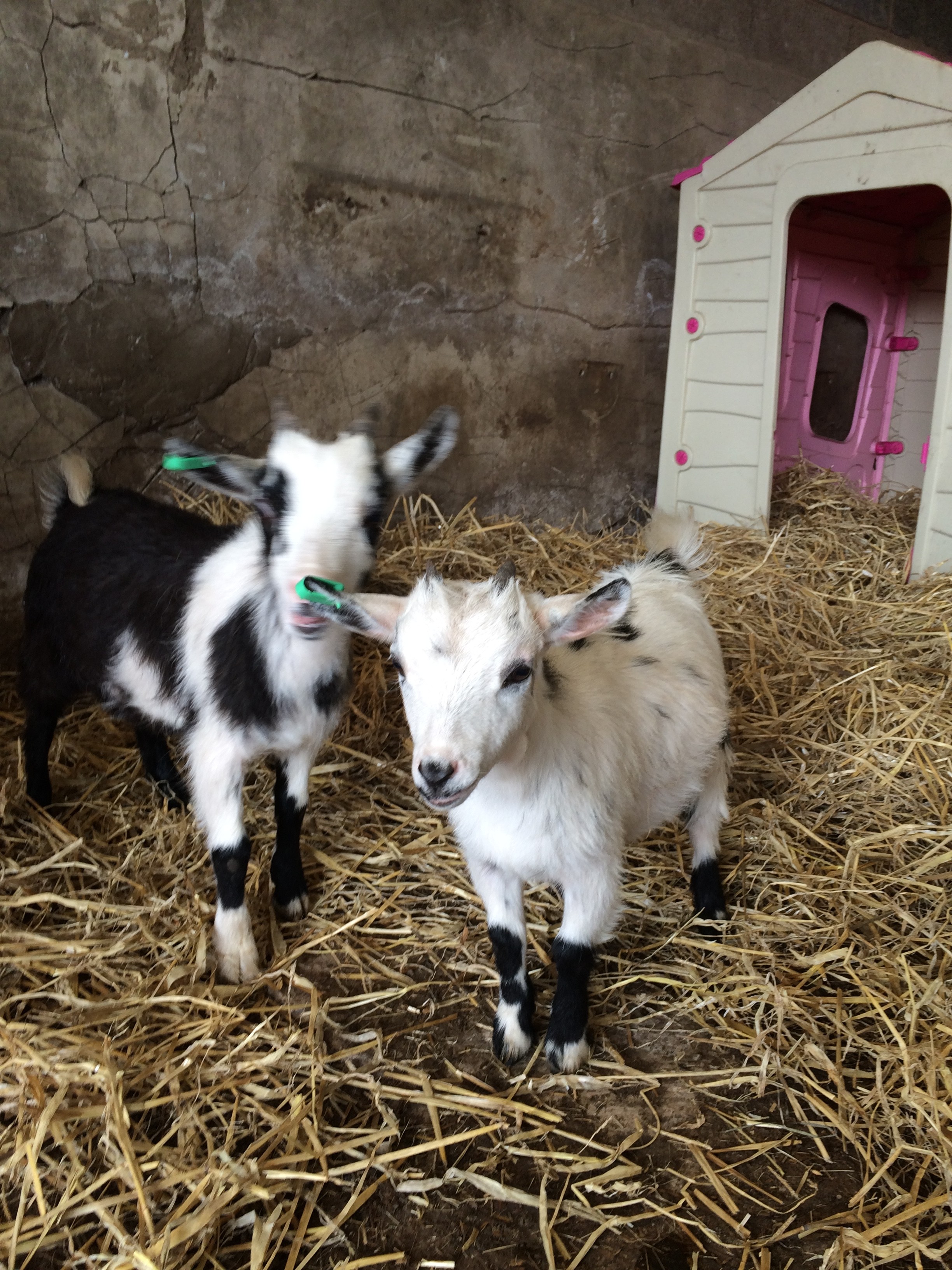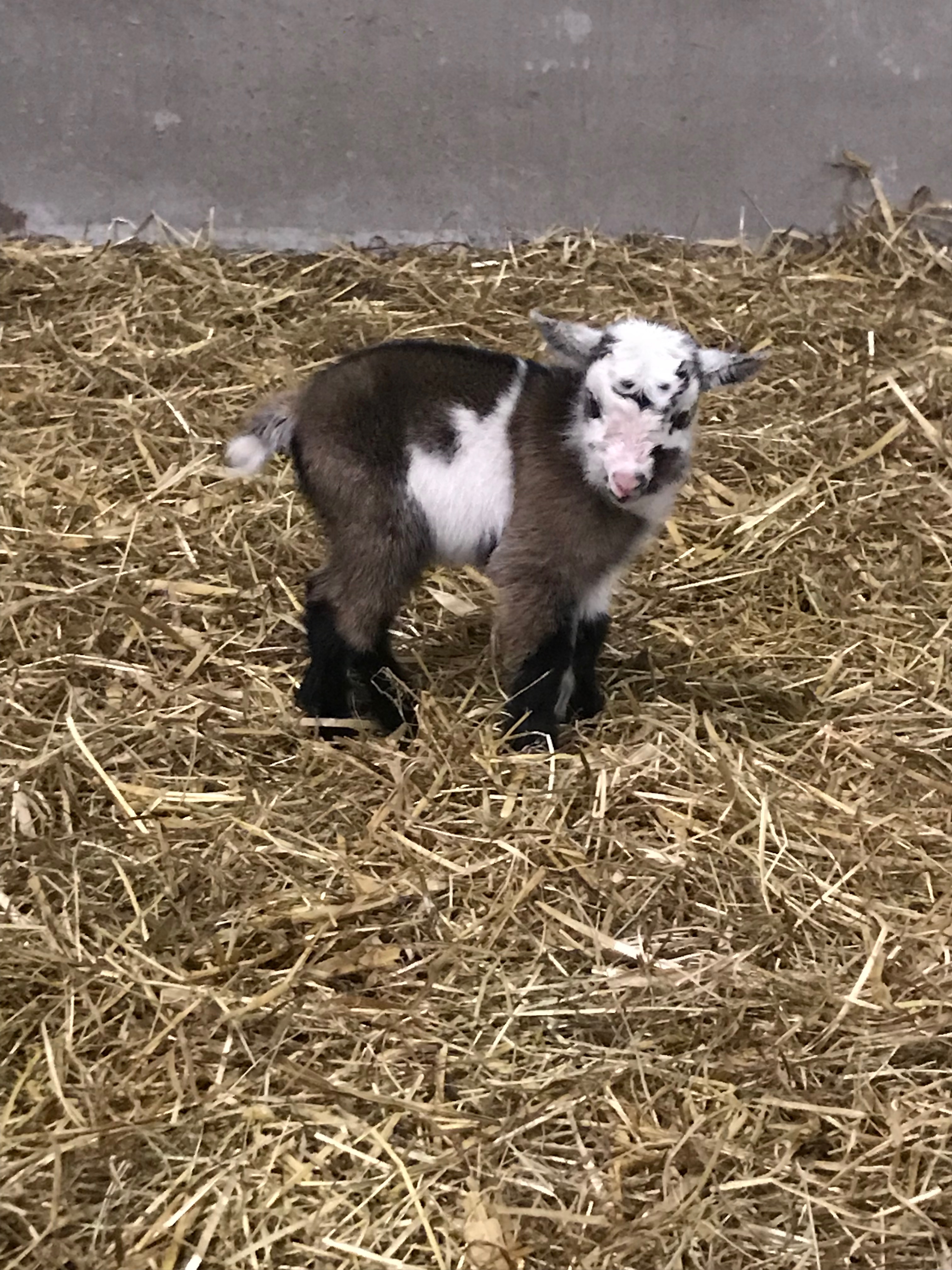Signs of Labour in Goats
I have experienced a few kiddings since owning Pygmy goats so I thought I would share with you some signs that your goat is either about to go into labour or is actively labouring.
If you have experience in sheep, the signs are not dissimilar but it is a good idea to get to know your animals before they get pregnant so that you will be able to spot unusual styles of behaviour which could be displayed when kidding is imminent.
1. The first thing I usually spot is that they are quieter than usual. Something you cannot quite put your finger on but you know they are subdued. This will be the early sign. If you are busy or in a rush, this can be missed but I have spotted it both times Chip has been in labour and also then with Cupcake. The first time, Chip stood with her back to me staring at the wall. I knew then.
2. They will go off their food. This is not always the case and the time between the food aversion and birth can vary. This year, Chip was off her food for the whole day of kidding (she gave birth around 4pm) and would not eat when I did the mid-morning feeding.
3. If they are not too uncomfortable and you can flip them over, their udder will be swollen and there may be some early signs of milk. I would say this is easier to spot in a nanny that is a first timer bit I did notice Chip (on her second kid) had a swollen udder.
4. They paw the ground. This is another sheep sign but this means they are in labour and probably uncomfortable. For any woman who has experienced labour, this uncomfortable stage is hard and I have totally empathised with animals when they labour. They have read no books about it but it does also demonstrate how natural birth is.
5. Sometimes you can see their tummies contracting. Other times they will tilt their heads right back. If they have horns, their horns will touch their shoulders as they lean back to strain.
6. If all else fails and you are still wondering, have a look at their back end. There may be a discharge. In early hours, it may just be a little bit. Just before they give birth, it could be quite a lot and include the amniotic fluid.
7. Some goats labour standing up but a common stance is on their sides with one of their back legs stretched out at a funny angle. It actually shocked me the first time I saw this because the goat was bleating very loudly and I got to see the full extent of her bulbous belly.
8. Their whole bottom area will be bulging. There will be no mistaking when the time comes for the kid to be born. You should see a pair of hooves and a nose. This is the correct presentation for a baby goat. Anything else, and the animal may struggle. Prepare to get your gloves on if this is the case (and you are confident in doing so) or have your vet on standby.
When Cupcake was born, I woke up one morning, went to check Chip (after noticing she had her face to the wall the night before) and the kid was there.
Chip’s second birth happened at around 4pm so we were there very soon after the kid was born because I had been picking the children up from school. Cupcake showed signs of struggle. She was lying down and crying so I rang my sheep farmer husband.
By the time he came, the membranes had burst and she was actually in less pain. She had stopped pushing though and, as a first time mum, we were worried she might get into difficulty. The farmer had to go back to the field so we took the decision that he should intervene.
The children looked on as their daddy helped Cupcake bring new life into the world. I don’t care what anyone says, witnessing the birth of any animal is amazing and it really does make you realise the miracle of life.
I am a firm believer in allowing animals time and quiet to labour themselves. Imagine it was you-no one wants an audience. Keep checking but try to leave well alone unless you think there is a problem.
Happy kidding.





